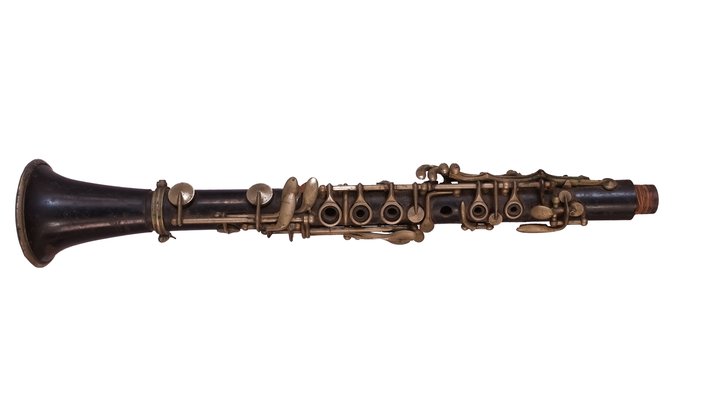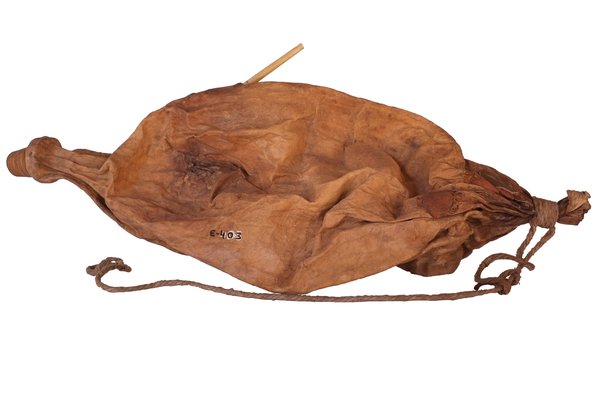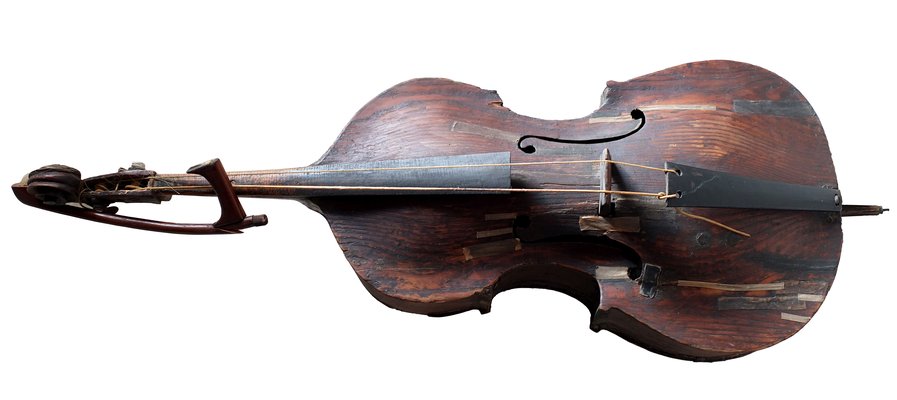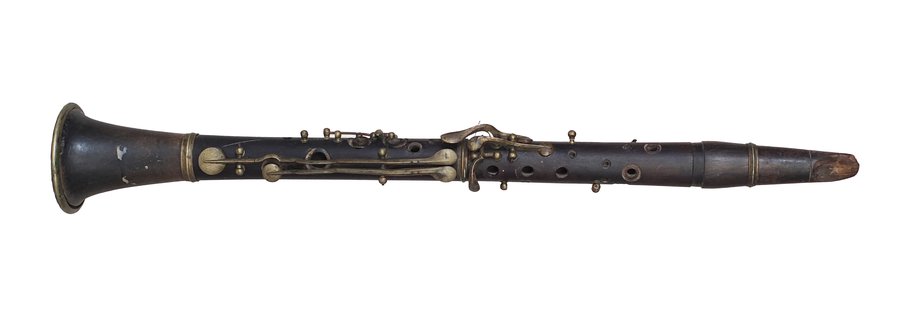-
Clarinet BI-592
Zbirka: Buzet Heritage Museum -
Mišnice with the bag E-403
Zbirka: Buzet Heritage MuseumBerto Bolanec
Wood, Skin, Rope, Bone, Woodturning, Hand made
L (lenght)=715 mm
Bag of the bagpipe mih with the stock and the blowpipe. The stock is decorated with rings made on the lathe. The chanter is missing. It is probable that the chanter corresponds to the one registered with the inventory number E-863.
-
Small double bass and bow E-844
Zbirka: Buzet Heritage MuseumPetohlep Adreja
, Podrebar (Buzet)Hand made
L (length)=1400 mm; l (body width)=500 mm; L (bow)=780 mm
Instrument in the form of a violoncello. There are two screws on which two strings from gut are attached. The instrument has no soul post, but this function is taken by the left foot of the bridge which goes through the square opening on the soundboard to the bottom.
-
Small sopela E-856
Zbirka: Buzet Heritage MuseumAnonymous
oko 1960/cca 1960Wood, Woodturning
None
The instrument has seven finger-holes while the seventh one (for the little finger) is double. The chanter has two metal rings inserted while on the bell there is also one. Further, the bottom of the bell is reinforced with a metallic part. The bell has also a vent-hole. The sopela is decorated with ridges and grooves made on a lathe. By the working method, it is possible that instrument was made by Miro Blažina – Pikutar.
-
Mišnice E-863
Zbirka: Buzet Heritage MuseumAnonymous
Wood, Woodturning, Hand made
chanter stock reeds A=130 E1=27 E6=13 H=56 d1=44 B=13 E2=20 E7=/ I=43 Ø1=5 C1=21 E3=22 F=5 J=32 d2=44 C2=21 E4=20 G=3 Ø2=5 D=20 E5=16,5 The instrument has a standard number and arrangement of finger holes. The chanter is decorated with ornaments in the shape of arrows and lines made with an incandescent wire. The stock is missing; it is probable that the chanter belongs to the bag inv.n. E-403.
-
Mišnice E-886
Zbirka: Buzet Heritage MuseumAnonymous
Wood, Woodturning, Hand made
chanter stock reeds A=152 E1=32 E6=21 H=52,5 d1= / B=14 E2=21 E7= / I=49 Ø1= / C1=24 E3=21 F=6 J=41 d2= / C2=21 E4=21 G=4 Ø2=/ D=20 E5=21 The instrument has a standard number and arrangement of finger holes. There is no side-hole. The stock is not particularly decorated; it is reinforced with a copper wire. The stock is decorated with rings made on the lathe and the bottom is notched.
-
Tamburica cindra K-1008
Zbirka: Buzet Heritage MuseumMiro Šverko
oko/cca 2000. , LanišćeWood, Hand made
L (length)=800 mm
Tamburica with two strings. It has 12 frets. The soundboard, the top plate covering the resonance box, has 5 sound holes of which the central one is of larger diameter. The instrument has two wooden machine heads. The name of the maker - Miro Šverko - is engraved on the side of the box.
-
Mišnice NN
Zbirka: Buzet Heritage MuseumAnonymous
Wood, Woodturning, Hand made
chanter stock reeds A=139 E1=35 E6=16 H=50 d1= / B=13 E2=19 E7=124-134 I=50 Ø1= / C1=22 E3=19 F=3-4 J=37 d2= / C2=22 E4=16 G=3 Ø2= / D=19 E5=16 The instrument has six finger holes on the right pipe. Such disposition of finger holes on the instrument is not so common in Istrian area. On each tube there is a vent hole. The chanter and the decorations are handmade. The stock, made on the lathe, is decorated with rings while its bottom is notched.










